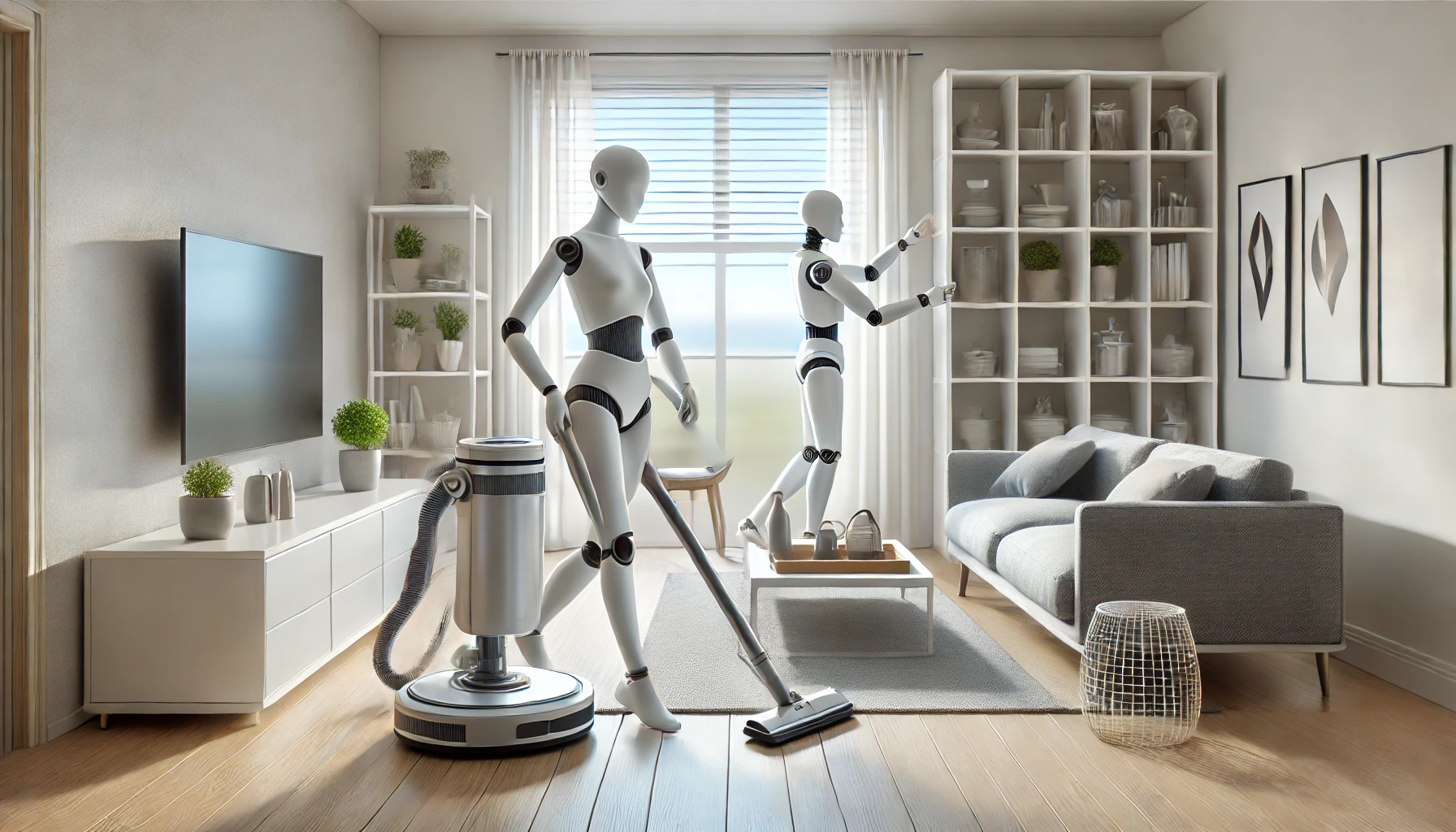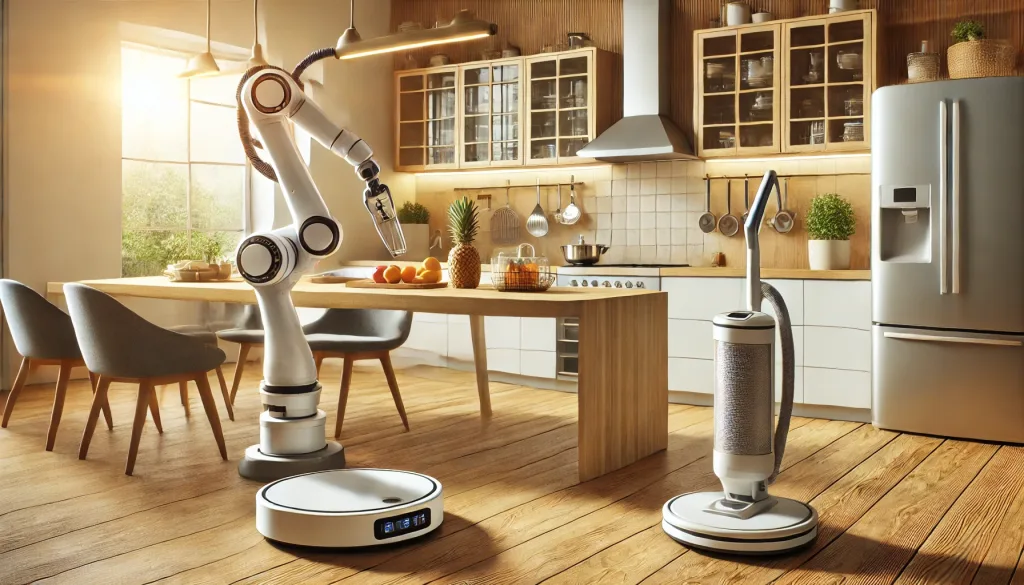
Robotics in Household Management: From Cleaning to Cooking
Robotics is no longer a futuristic concept; it has become a tangible part of our daily lives. From simplifying mundane household chores to revolutionising how we prepare meals, robotics is redefining modern living. With advancements in artificial intelligence and machine learning, these devices are more efficient, intuitive, and accessible than ever before. This article explores the transformative role of robotics in household management, highlighting its applications in cleaning, cooking, and beyond.
The Rise of Domestic Robots
In recent years, the integration of robotics into household management has significantly transformed daily life. These innovations, ranging from automated vacuum cleaners to smart kitchen assistants, are not just luxury items; they have become practical tools that enhance efficiency and convenience. The rapid development of technology has made these devices more affordable and accessible to a broader audience.
Robots have shifted from performing basic tasks to handling complex household duties with precision. They can now clean homes, monitor security systems, and even act as personal assistants for elderly or disabled individuals. This evolution reflects a growing trust in robotic technology, fuelled by the reliability and efficiency it brings to daily routines.
Understanding the Growth of Home Robotics
The home robotics market has witnessed exponential growth, driven by advances in artificial intelligence (AI) and machine learning. Devices like robotic vacuum cleaners and lawn mowers are equipped with sensors and AI algorithms, enabling them to operate autonomously. According to recent market studies, the global home robotics market is projected to reach $30 billion by 2025, underscoring the increasing reliance on these technologies.
Furthermore, advancements in voice recognition and integration with smart home ecosystems, such as Alexa or Google Home, have enhanced the functionality of these robots. They can now respond to voice commands, set schedules, and integrate seamlessly with other smart devices in the household. These innovations demonstrate the potential for robotics to become a central element in connected homes.
Robots Revolutionizing Household Chores
Household robots are designed to tackle mundane and repetitive tasks, freeing up valuable time for individuals. From cleaning floors to managing laundry, these robots are engineered for efficiency. Popular models, such as the iRobot Roomba and Ecovacs Deebot, exemplify how robotics simplifies household chores. These devices are no longer limited to performing their primary function; they also include additional features such as air purification and real-time home monitoring.
The emergence of multi-functional cleaning robots showcases their adaptability to varied household needs. For instance, some models can simultaneously vacuum, mop, and disinfect surfaces. These capabilities not only enhance convenience but also promote hygiene, particularly in homes with pets or young children.
Advanced Cleaning Technologies
Modern cleaning robots utilize LiDAR navigation and advanced suction mechanisms to ensure comprehensive cleaning. They are equipped with app connectivity, allowing users to control and schedule cleaning tasks remotely. Additionally, multi-function devices, like those capable of mopping and vacuuming simultaneously, represent a leap in automation technology.
Robotic lawn mowers and window cleaners are other examples of advanced cleaning technologies entering the market. These devices operate autonomously, using GPS navigation and safety sensors to provide consistent results. They also minimise energy consumption by operating during off-peak hours, making them eco-friendly choices for tech-savvy homeowners.

The Role of Robotics in Cooking
Beyond cleaning, robotics has made inroads into the kitchen. Smart kitchen assistants, such as robotic arms capable of preparing meals, are becoming a reality. Companies like Moley Robotics have developed fully automated kitchen systems, capable of cooking gourmet meals with minimal human intervention. These innovations cater to the increasing demand for convenience in meal preparation. The trend signifies a shift towards personalised and automated cooking experiences that blend technology with culinary art.
These robotic systems not only save time but also promote healthier eating habits by precisely measuring ingredients and cooking meals with optimal nutrition. They are ideal for busy professionals, families, or anyone looking to simplify meal preparation while maintaining quality and taste.
Features of Robotic Kitchen Assistants
These systems are equipped with precision sensors and programmable recipes, allowing users to customize meal preparation. From chopping ingredients to plating dishes, robotic kitchen assistants are designed to mimic professional chefs’ techniques. Such advancements promise a future where meal preparation is both efficient and enjoyable.
Moreover, smart refrigerators and ovens can now suggest recipes based on available ingredients, adding another layer of automation. Paired with robotic arms, these systems create a seamless cooking process, making even the most complex recipes accessible to anyone.
Conclusion
The evolution of robotics in household management underscores the transformative potential of technology. As these devices become more sophisticated, they not only enhance convenience but also redefine how we interact with our living spaces. Robotics is set to continue its growth, with future innovations focusing on sustainability, energy efficiency, and even greater personalisation. This ongoing progress ensures that home robotics will remain an integral part of modern living for years to come.
